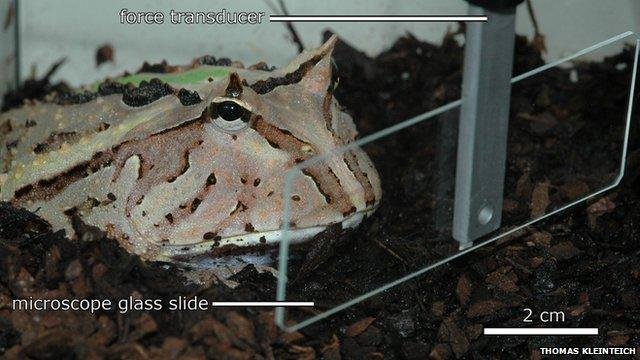KIEL, Germany, June 12 (UPI) -- Trying to figure out how to measure the stickiness of a frog's tongue isn't an everyday problem, but it was the central problem for researchers at Kiel University in Germany, who wanted to better understand how the Amazon horned frog hunts and captures its prey.
The horned frog of the Amazon doesn't just slurp up lazy, unsuspecting insects. They hunt and eat lizards, snakes, rodents, other frogs and even small birds. Who knew something that hops around and croaks could be so vicious?















